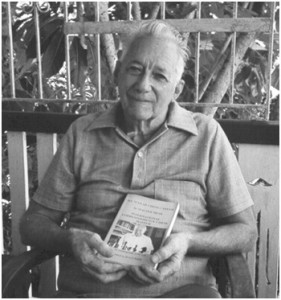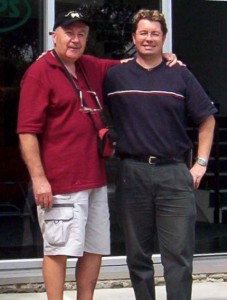Name of Federation: Correspondence Chess League of Australia (CCLA)
Year of Foundation: 1929
ICCF Delegate & E-Mail contact: Tim Runting (runting@bigpond.net.au)
Website: http://www.ccla.net.au/
Article provided by: Tim Runting
Australia has one of the longest traditions of organised correspondence chess of any country – almost certainly the longest in the southern hemisphere. The organisation has now been running for 70 years.
As the home nation of the first CC World Champion, C.J.S. Purdy, Australia will always have a special place in CC history.
The Australian Correspondence Chess Organisation began in August 1929, as a branch of the Melbourne Chess Club. Frank Crowl, who was on the Committee of the new organisation, was Victoria’s rising cross-board star and by good fortune the rising NSW cross-board star was Cecil Purdy, who had just commenced publication of his “Australasian Chess Review” (ACR). By December there were 38 members, with many games in progress.
In 1930 the name was changed, at Purdy’s suggestion, to Correspondence Chess League of Australia. This is still the name used today intimately known as “CCLA” or “the League”.
The first championship of the league began with 16 players in 4 sections. Crowl was the favourite but was beaten in his section by S.F. James of Kempsey NSW, but the final score in 1934 was Ludlow 5½ – ½, James 4½ -1½, Robertson 2-4, Dunstan 0-6. Mr. O. Ludlow died in 1944, but his family still possesses the gold medal. “An unorthodox but extremely resourceful player” said ACR.
Most other CC organisations play by means of postcards. An Australian innovation was the score sheet, posted to and fro between players of a game on which all the moves were written. Originally introduced by Purdy in 1933 to gain a postage concession, it has survived as the most convenient way of playing in Australia.
In 1934 a “perpetual handicap” was devised. In this tournament, the members of the League were divided into six classes by their playing strength and points were awarded for each win or draw against another member depending on his class with promotion or relegation from class to class decided by the Director according to the results. This continued annually until 1950.
Most of the leading cross-board players did not at first consider CC had anything unexpected to offer but the success of some CC specialists caused reconsideration. In May 1937 Purdy wrote in ACR – “It has astounded us to find players between whose CC play and crossboard play there is such a wide gulf”.
In 1937, the league was passing through a bad period; the Director had been ill and games were at a standstill, with membership dropping. To launch a revival, the League decided to become independent of the Melbourne Chess Club and a largely Sydney based committee was formed. It commenced a vigorous recruitment drive and published a booklet about CC to aid this campaign.
This booklet, now known as the “Green Book” is still in publication to this day. By February 1938 the League had a reported membership of 200 and a Women’s Championship was organised.
The first Australian Championship was begun in 1937 and won by Purdy with Koshnitsky as runner-up, and they took the same positions in the second championship, begun in 1945.
The first Australian Women’s Championship was prolonged; it had been conducted on the section system and did not finish until 1943. This championship was won by Mrs. Steiner, who had begun the event as Miss Edna Kingston. Due to insufficient entries, the 2nd Championship was not organised until 1957. In retrospect, the reluctance to start small title events seems unfortunate but, in 1968, the principle was established that a title event would start, even if there were only two entries.
In 1935-37 there had been a 25-board match against New Zealand, but regular airmail after World War II made more ambitious plans for overseas play possible. In 1946 CCLA joined the International CC Association (ICCA reorganised in 1951 as ICCF). In 1946 a team (Purdy, Koshnitsky, Goldstein, Neild, Crowl and Willison) was entered in the first of the series of 6-player team tournaments which subsequently became known as “Olympiad”; and in 1947 there were 2 entries in the first World CC Championship (Purdy and Koshnitsky).
Although Cecil Purdy was born in Port Said and lived briefly in New Zealand and Gary Koshnitsky was born in Russia, they were both essentially Australian players, who did an enormous amount for the game in their adopted country. Twice Australia OTB champion, Koshnitsky finally earned the ICCF-IM title in the 6th Olympiad Final.
In the late 1940’s several master players from overseas arrived, displaced by war from Eastern Europe, including two who became Grandmasters. Lucius Endzelins (born in Estonia) who came to Australia in 1949, having represented Latvia in several of the pre-war FIDE Olympiads. As the runner up in the second CC World Championship, he became the country’s second G.M. before it had any CC-IMs. He remained an active player until the 1980’s. The third Australian CC-GM was Romanas Arlauskas, who came to Australia in 1948. He won the 3rd Australian CC Championship in 1950 ahead of Endzelins and gained his GM title by taking 3rd place in the 4th CC World Championship. The joint 12th Australian CC Champion was Dr. I. Venclovas who was born in Lithuania. Another immigrant from the Baltic States was the Latvian master, Karlis Ozols.
It would appear that Australian CC, as in many other areas, has much to be grateful for to migrants who chose our country as their new home and who have done much to further the expertise of CC.
Among the leading native CC players were Frank Crowl, who contested many games with Purdy in the 1930s, CC-SIM Max Salm who won the 4th (1955) Australian Championship and contested three World CC Championship Finals and the late John Kellner who earned the IM title when he tied for fifth place in the 6th World CC Championship.
The Olympiad and the World Championship were both played on the section system, with (in general) only the winner of each section going to the final.
It is difficult to find an alternative when there are a large number of entrants, but it can be a frustrating system for those who are just beaten in a section, as the Olympiad team were to find, coming second to Sweden in their section. Cecil Purdy’s experiences in the first World Championship were dramatic: moreover, everybody was able to share in the drama, as news and some games were featured in “Chess World”.
Purdy won his qualifying section, although it took an amazing “save” against Dr. Bigot of France to get there. Then the 14-player final began. In 1953, Purdy’s final game was drawn and he became the first ever CC Champion of the World. His score was 10½ -2½, Malmgren of Sweden sharing second with Dr. Napolitano of Italy on 10-3. That’s how close it was!
Purdy’s success had an unequalled impact for Australia. In 1946 we didn’t know how we compared with other countries but seven years later we were recognised as one of the strongest. Since then, we have tried to maintain a high standard and level of play.
Membership grew; in 1948 there were 400 members; 500 by 1958; 750 by 1965; 1000 in 1968 and 2000 in 1974-75. Membership numbers have of course fluctuated over the years, and there are many reasons for this, not the least being marriages, births and deaths, all of which create change in their own way.
In 1966, a regular cycle of “Major Events” was introduced, then in 1971-72 the Master Title was revised and Life Membership conferred on Masters and Class Championships were started. Every 3 months, publication of the official magazine of CCLA, the Australian Correspondence Chess Quarterly, began. Formerly known as the CCLA Record, it is automatically forwarded to every member and contains news, results of tourneys, notice of coming events, articles, games and regular schedules of changes of ratings. Each year in the November issue, a full list of members is included. As letters to the editor are often published, it has proven to be a good communication link between members. The change of title in 1987 was to give a more accurate impression of its subject matter and under its two names the magazine has a continuous publishing history dating back to 1948. (There have been a few different editors of course, but most recently Dr. G.McIntyre has taken over the reins).
In 1960 the post of Games Starter was established, D.J. Fraser being the inaugural occupant.
Over the years the League has had many outstanding players and officials who have contributed much time and effort in establishing the CCLA. One of the key figures to be mentioned is R.G. (Bob) Laughton, who at one time was Treasurer, Games Starter and Membership Secretary, holding all three posts simultaneously.
Following the death of Cecil Purdy in 1979, D.J. Fraser was elected as President, assisted by long-time stalwarts such as M.C.C. Newman, Mrs. V.A. Oliver, D.A. Keast, A.O. Holloway and numerous others, until 1998 when M.C.C. Newman took over as President.
Although Email now plays a large part in CCLA activities, there are still many players playing by “snail mail” and who are more than happy to do so.
Acknowledgment must also go to all those who over the years have contributed their time and effort in to making the League a successful organisation and one that we hope will reach greater heights in the 21st century.
International Tournaments
Several International Invitation Tournaments have been organised by CCLA. Below you can find the results of two Tournaments organised in the 1980s.
Lucius Endzelins Memorial Tournament (1984-1992)
The tournament was played in 7 sections of 7 players. The winner of each section went to the final.
Result of Final: 1. S.J. Henri (Australia) 4 points; 2/3. W.E.Maillard (USA), V. Pedersen (Australia) 3½; 4/6. K.V. Grivainis (South Africa), P. Ma (Australia), J.L. Vehre (USA) 3; 7. Dr. G. Hardman (USA) 1.
John Kellner Memorial Tournament (1989-1994)
This tournament was played in 2 groups.
Section A: 1. P. Stigar (Norway) 10 points; 2. J. de Mauro (USA) 9½;. 3. C. Pare (Canada) 9; 4/6. C.B.Jones (USA), G. West (Australia), V. Pedersen (Australia) 8½;. 7/10. M.J. Read (England), A. Prystenski (Canada), P. Giulian (Scotland), R. Chapman (New Zealand) 8; 11. D. Lovejoy (Australia) 6½; 12. R. Wikman (Finland) 5; 13. Dr.G. Peli (Israel) 4½; 14. K. Harrison (Australia) 3; 15. J. Estiot (Australia) 0.
Section B: 1. E. Flicker (Germany) 13 points; 2. M. Prizant (England) 9½; 3. H.J. Lassen (Denmark) 9; 4/5. M.F. Noble (New Zealand), M. Ebeling (Finland) 8½; 6/7. B.K.D. Dehmelt (USA), J. Kolenbrander (Netherlands) 8; 8. H.F. Glaser (Singapore) 7½; 9/11. S.J. Henri (Australia), G. Mettyar (Australia), S. Chouinard (Canada) 6; 12/13. A.M. Levine (USA), S.R. Gillam (Scotland) 5½; 14. P.Dewar (Australia) 4; 15. A.Harriman (Australia) 0.


